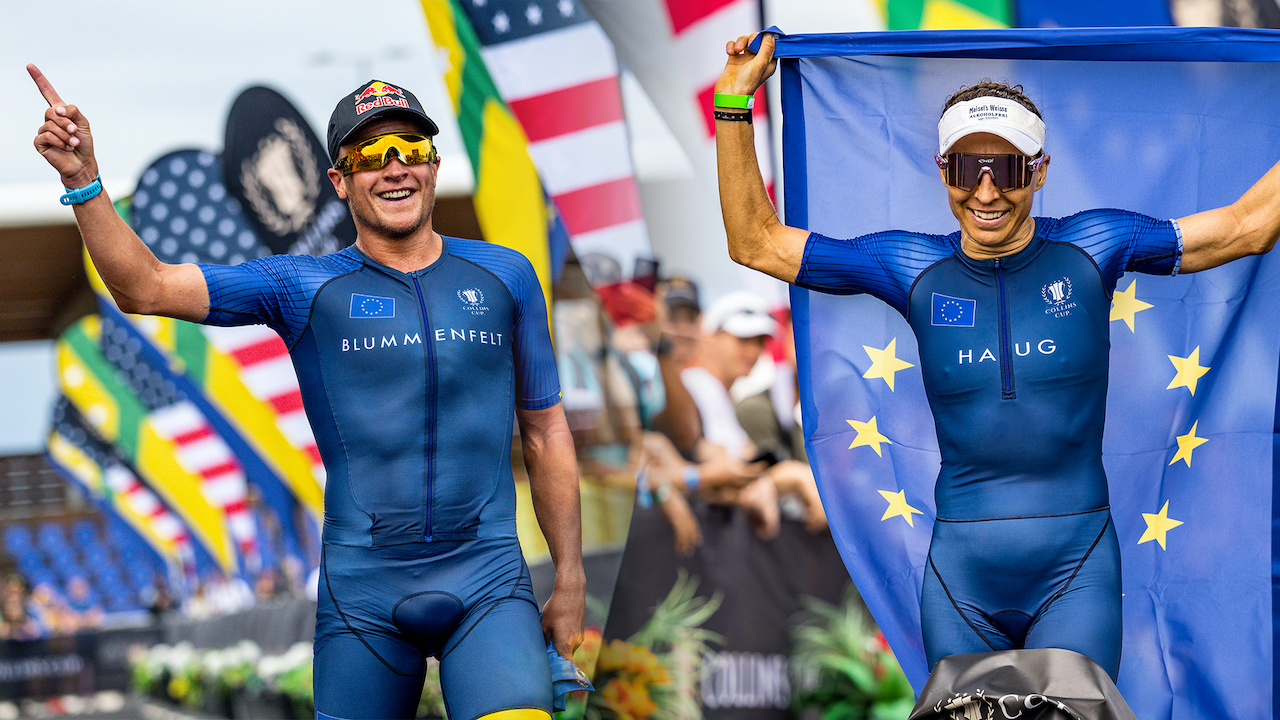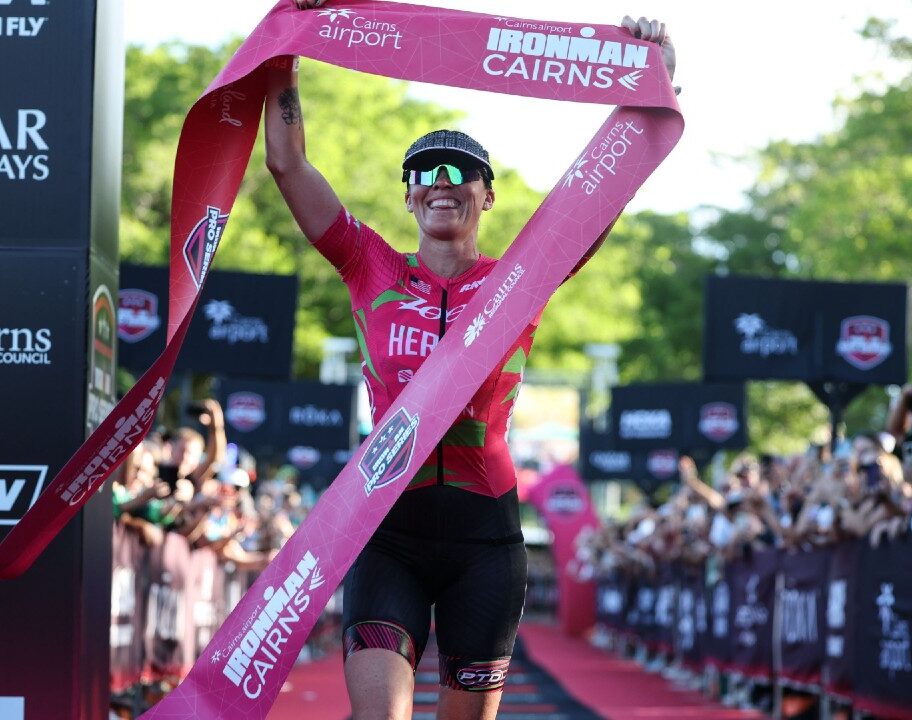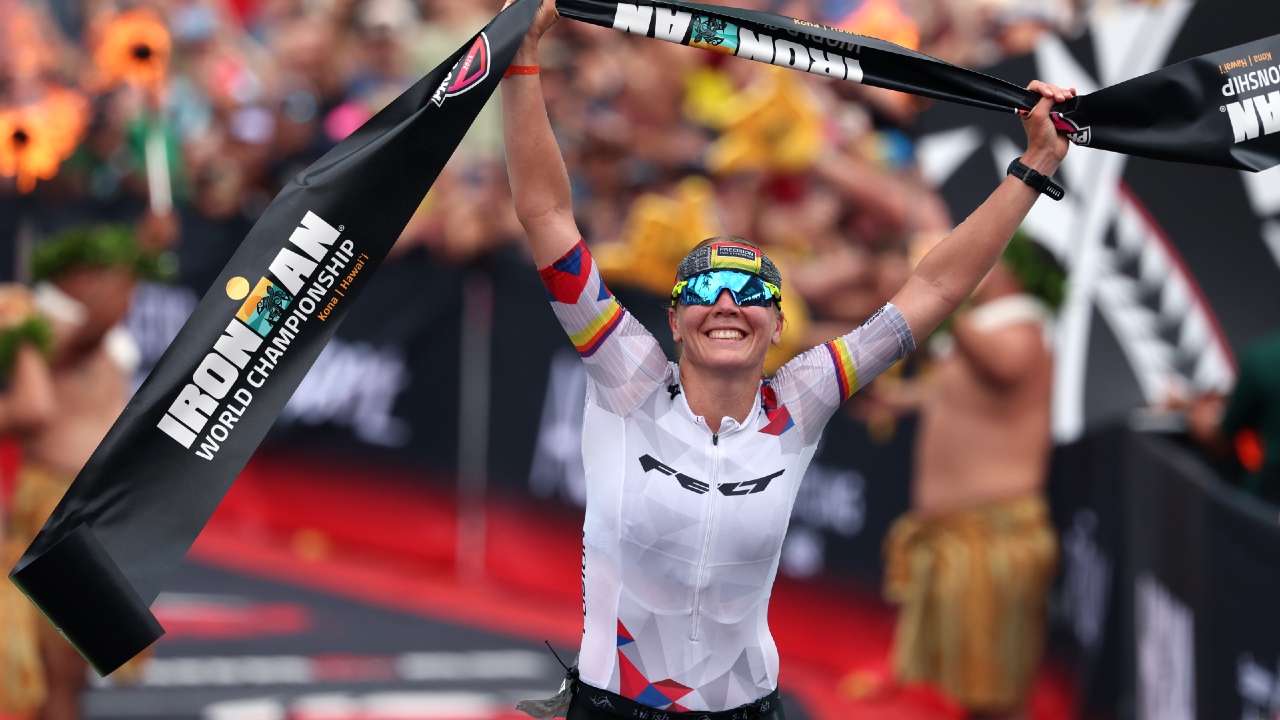“Simple, transparent, objective and fair.”
Those were the core principles that a PTO Athlete Rankings Committee has been working on for well over a year now, the results of which have been announced today in a major change the PTO’s World Ranking System.
That revised approach is now live from today – and it means some significant changes in the early 2023 standings – the most notable of which is 2022 World #1, Anne Haug, dropping down to #6, replaced by Ashleigh Gentle, as the new methodology is introduced.
More on that in due course, but let’s focus on the new system first. What is it and why has it changed?
Au Revoir to the Algorithm
As regular readers will be aware – as we cover it regularly – until the end of 2022 the basis of the PTO Rankings has been a proprietary, statistical algorithm that assesses an athlete’s performance, on the basis of finishing time relative to other athletes, and utilising some complex mathematics and historical data, to allocate points relative to an ‘Adjusted Ideal Time’ (AIT).
All races, potentially, could yield high scores if the (algorithm-assessed) performance was deemed exceptional – irrespective of whether that was the IRONMAN World Championship or a lower tier, IRONMAN 70.3 or Challenge Family event, for example. The aim – broadly, from my perspective – was to assess the relative ‘value’ of an athletes performance, wherever the race was, whatever the status of the race and whoever they were racing against.
While generating plenty of talking points, there’s also been significant vocal criticism and questioning along the way, from athletes, fans and media. Notably, how does the ‘black box’ work, and do some outputs truly make sense?
A new direction
Wanting to be part of the solution, a five-athlete working group formed, comprising Ruth Astle (GBR), Antony Costes (FRA), Renee Kiley (AUS), Jackson Laundry (CAN) and Danielle Lewis (USA). Was there an alternative way to enhance clarity, credibility and resolve some of those constant questions, for the benefit of everyone involved?
That the group has been working on this for well over a year provides an indication of the scale of the project they took on. The result of that work, ratified by the Athlete Board, has resulted in the new World Ranking System (WRS) comprising of the following core elements:
- A tiering system for races
- Rewarding race positions directly
- Consideration of the strength of field at each event; and
- Ensuring exceptional performances are rewarded based on finishing times compared to other athletes in the same race.
Let’s take those in turn.
New Tiering System – Race Position Score
Moving forward, the status of a race – Tier – is a direct factor in determining the number of points that can be earned. There are five Tier levels – Diamond / Platinum / Gold / Silver / Bronze – and the Tier that a race is categorised as sets the Base Points within the World Ranking System.
The Tier of a race is primarily based on prize money, however other factors such as prestige, media exposure and broadcast coverage – as well as travel and accommodation assistance provided to athletes and their overall commitment to supporting professionals and lifting the profile of the sport – are also taken into account.
First place will be allocated the full Base Points (100, 95, 90, 80 or 70), and then subsequent finishing positions drop off from there. For added complexity, the rate at which points drop off also changes by Tier. It’s 2% per position for Diamond and Platinum, but 5% / 8% / 11% for Gold, Silver and Bronze, respectively.
Thus, the Position Scores for the top three positions in a Diamond Tier race would be 100 / 98 / 96.04. In a Silver Tier event, those same position would generate 80 / 73.60 / 67.71 etc.
Net result is that 40% of a Overall Race Score comes from this Tier rating / Base Points approach.
Strength of Field Score
Generally speaking, higher ‘Tier’ races will attract the strongest fields, but other factors can come into play. For example, this year the PTO Asian Open (which will be a Diamond Tier), falls one week prior to the IRONMAN 70.3 World Championship (which will be a Platinum Tier). I expect some Europe-based athletes, for example, to elect to race at the 70.3 Champs in Finland rather than Asia, which might make the Strength of Field at the Asian Open less than the US Open, for example.
On the flipside, something like IRONMAN 70.3 Oceanside typically attracts a stronger field than many other events which will fall into the same Tier. This element of the new WRS is designed to account for that.
How is it calculated? The Strength of Field (SOF) Score is based on the average ranking points of the top five athletes who start the race (regardless of any eventual DNFs).
Impact? 30% of the Overall Race Score comes from the Strength of Field Score calculation.
Race Time Score
Hold on… didn’t we ditch finishing times? Yes and no. Times ARE still a factor, but you can – should you wish to do the maths yourself – calculate exactly how the time element is arrived out. There’s no proprietary algorithm to try and interpret.
The logic is, quite rightly I feel, that finishing position and strength of field alone don’t fully encapsulate a performance. Finishing 15 seconds behind in a close race is clearly a ‘better’ result than the same position, but 10 minutes slower.
Depending on the number of finishers in a race, a Baseline Time is calculated by taking the average finishing time of a defined number of athletes (from winner only, through to the top five in a race with more than 16 finishers). You then add or deduct 6 points for every 1% faster or slower an athlete is relative to that Baseline Time. What do you add those points to? Well, you add them to a Baseline Score…. and that Baseline Score is the average of the Tier Base Points and the Strength of Field Score, both referenced above.
Confused yet? Simple it isn’t, but every element IS transparent. On an ongoing basis, that’s all you need to know.
The resulting Race Time Score contributes 30% to the Overall Race Score.

You can click here for the extensive, detailed version of the new methodolgy.
Anyone for a bonus?
As with the previous system, an athlete can still gain a bonus for their best full-distance race ranking. However, this is now 5% rather than 10% uplift. In addition, this can only be applied to races that fall in the Gold, Silver or Bronze Tiers. In practice, this means NOT at the IRONMAN World Championship, Challenge Roth or on the rare occurrence that the World Triathlon Long Distance Championships was held over the full distance (which has only ever happened twice).
Why get a bonus at all?
- Middle-distance focussed athletes typically race more times per year, and hence have more opportunities to improve their rankings
- Currently at least, there are far more Diamond and Platinum races over middle-distances.
(Note, for the purposes of this, a full distance is defined as races over 4km swim / 120km bike / 30km run, including those with a 3.8km swim).

Three to Score
As currently, despite the changes outlined, an athlete’s overall World Ranking Score will reflect the average of their top three results within a rolling 52-week period.
‘The system needed to change’
One of the key themes of the PTO is that it is an athlete-owned entity, alongside its investments partners with the athletes being self determined co-owners. Their words, not mine.
Given that, while I fully understand many of the issues, concerns and frustrations of the PTO Ranking system to date, ultimately – if the above statement is true – then the athletes have been criticising themselves, because they ARE the PTO. For that reason, that this new approach has been a long-term working process, driven by the athletes themselves, is a huge step forward and I hope (read – should…) massively enhance ownership of it. I’ve no doubt there will be further tweaks, updates and improvements over time, but ultimately those should be reviewed within the Athlete Board structure, rather than Instagram…
That athlete ownership aspect is was referenced by the the PTO’s CEO, Sam Renouf, today:
“As an organisation co-owned by its athletes, it was important they took the lead in developing the new PTO World Ranking System, following unanimous feedback that the system needed to change.
“We would like to especially thank the PTO Athlete Rankings Committee for all their ideas, energy and hard work over the last 12 months, which I believe has got us to a much better place. An effective PTO World Ranking System is crucial to help us spotlight the sport’s superstars and create a season-long narrative for fans to follow.”
More reaction, comment and thoughts on today’s news coming very soon.





















